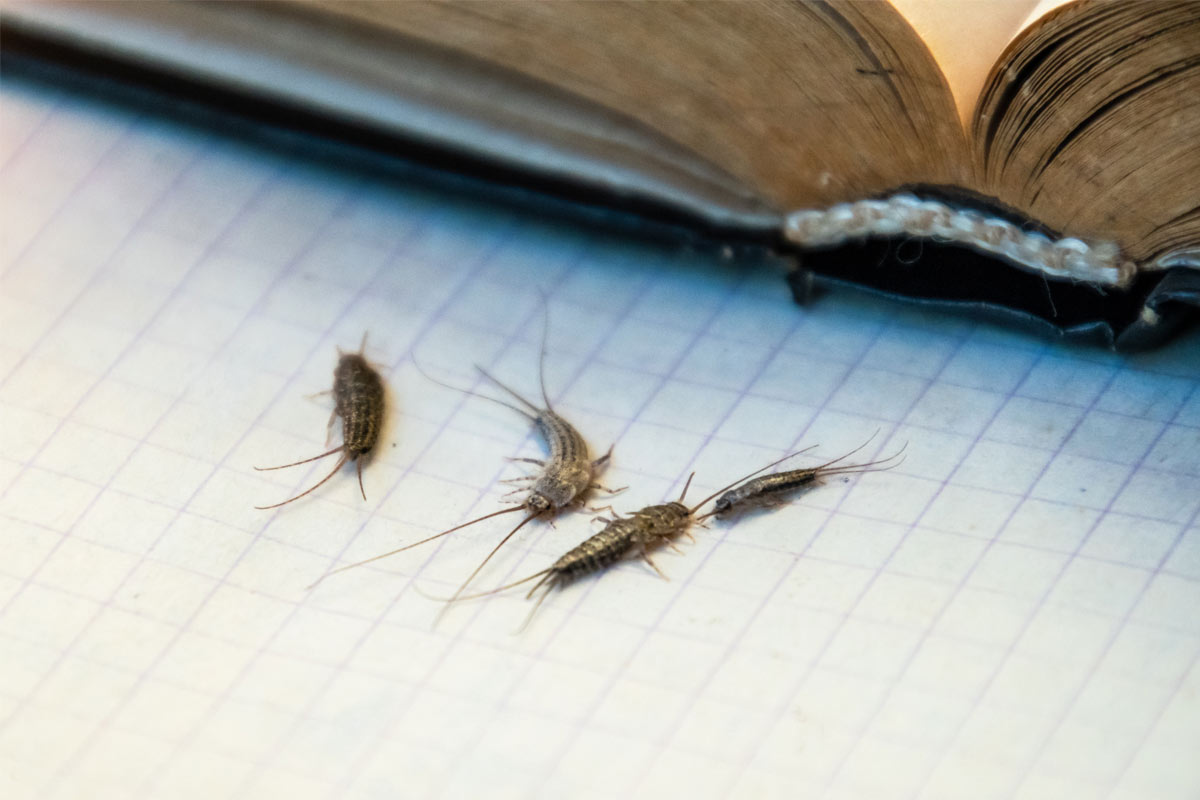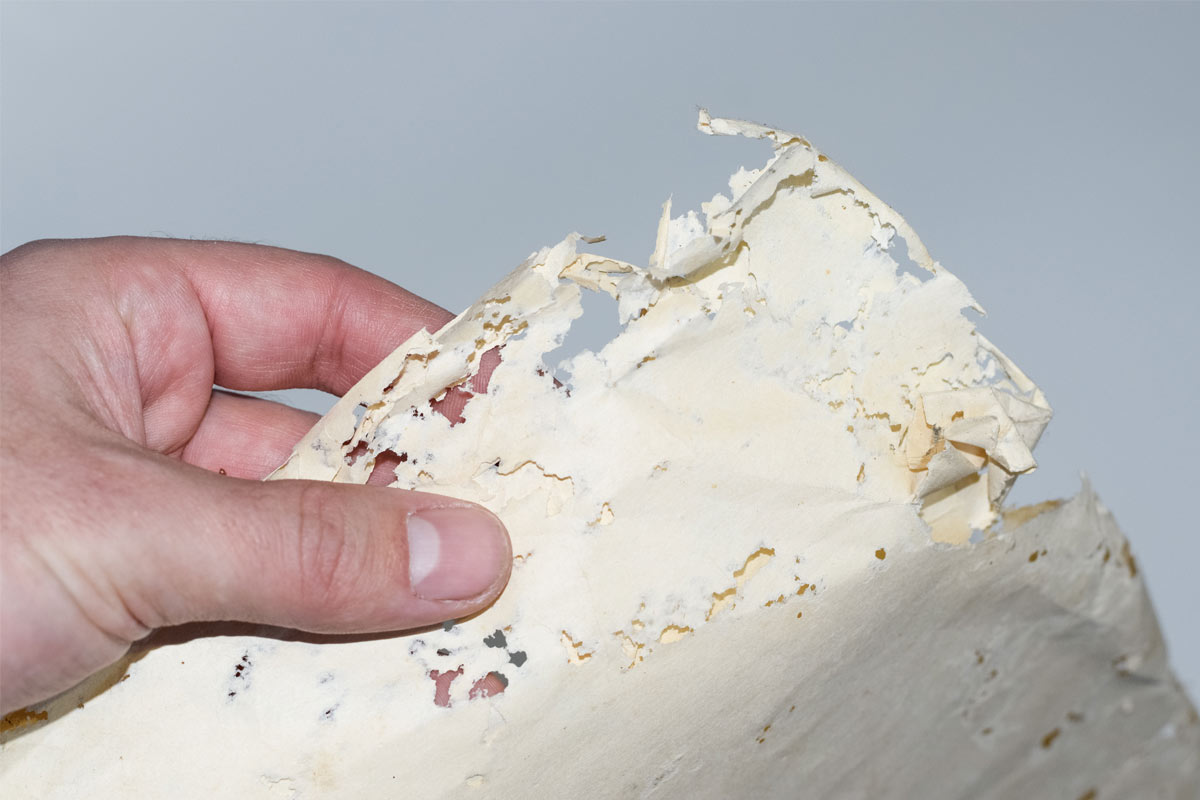
Silverfish (Lepisma saccharinum) are frequent, though often unseen, inhabitants of Canadian homes. These small, wingless insects thrive in environments offering moisture and readily available food sources, making areas like basements, bathrooms, and kitchens common habitats. Their unique appearance includes silvery-grey scales covering an elongated, carrot-shaped body, complemented by two long antennae at the front and three distinctive tail-like appendages, known as cerci, at the rear.
The presence of these nocturnal creatures often raises concerns among homeowners. The primary question is whether silverfish pose a genuine threat to human health or cause significant damage to property. Let’s examine the biology and behaviour of silverfish, details their identifying characteristics, assesses the potential damage they can inflict, and outlines effective methods for their management and control within residential settings.
Silverfish: What Do They Look Like?
Silverfish possess a distinct morphology that aids in their identification. Adults typically measure between 12 to 19 millimetres in length, excluding their prominent antennae and cerci. Their bodies are flattened and taper from head to tail, resembling a teardrop or carrot. The most striking feature is the covering of fine, silvery-grey scales, giving them a metallic sheen and inspiring their common name. They lack wings throughout their lifecycle. Young silverfish, or nymphs, resemble smaller versions of the adults but initially lack the silvery scales, which develop as they mature through several moults. Their rapid, fish-like movement further contributes to their name and recognizability.
Behaviour and Habits: What Do They Do All Day?
Understanding the typical activities and preferences of silverfish provides insight into why they infest homes and how to manage them. These insects exhibit specific patterns related to feeding, environment, and reproduction.
- Nocturnal Activity
Silverfish are primarily nocturnal, preferring darkness and avoiding direct light. During daylight hours, they remain hidden in secluded cracks, crevices, behind baseboards, or within wall voids. Their activity increases significantly at night when they emerge to forage for food sources throughout the dwelling, often going unnoticed until an infestation becomes substantial. - Dietary Preferences
These insects are scavengers with a preference for carbohydrates, specifically starches and sugars (polysaccharides). Their diet includes paper products, glue (especially in book bindings and wallpaper paste), starched fabrics like cotton and linen, cereals, flour, dried meats, and even shed insect exuviae or mould. They can survive for extended periods without feeding. - Preferred Habitats
Silverfish require high humidity environments, typically between 75% and 95%, and moderate temperatures. Damp basements, bathrooms, kitchens (especially around plumbing), attics with leaks, laundry rooms, and crawl spaces provide ideal conditions. They seek out dark, moist areas offering protection and proximity to food materials like paper storage or textiles. - Reproduction and Lifespan
Silverfish reproduction involves complex courtship rituals. Females lay small clusters of eggs, often fewer than 60 at a time, depositing them in cracks or crevices. The incubation period varies with temperature and humidity. Nymphs undergo numerous moults before reaching adulthood, a process that can take months or even years. Adults can live for several years under favourable conditions. - Movement and Exploration
Despite lacking wings, silverfish are agile runners capable of moving swiftly across horizontal and vertical surfaces.19 Their flattened bodies allow them to squeeze into very narrow openings. They explore widely within a structure when foraging, following plumbing lines or electrical conduits between walls and floors to access different areas of a home.
Potential Damage Caused by Silverfish

While not directly harmful to humans, silverfish can cause considerable nuisance and damage to household items due to their feeding habits. Their impact is primarily on materials rich in starches, sugars, or proteins.
- Damage to Paper and Books
Silverfish consume the cellulose and starches found in paper. They graze on the surface of paper, leaving irregular holes, notches along edges, or yellowish stains, often from faecal matter. Book bindings, photographs, documents, artwork, and archival materials are particularly vulnerable, potentially suffering irreversible damage over time if infestations persist. - Damage to Textiles and Clothing
Natural fibres such as cotton, linen, silk, and rayon can be attractive food sources, especially if starched or stained with food or beverages. Silverfish chew irregular holes in fabrics or graze the surface, weakening the material. Damage might not be apparent until items are washed or handled. Synthetic fibres are generally less susceptible unless blended with natural materials. - Food Contamination
While primarily feeding on non-food items, silverfish will infest stored food products, particularly dry goods like flour, cereals, pasta, oats, and sugar. They contaminate these items with their bodies, scales, and faeces. Though not known to transmit disease, contaminated food should be discarded for sanitation reasons. Proper storage in airtight containers is crucial. - Minimal Direct Health Risk
According to Health Canada, silverfish are not known to bite humans or transmit pathogens. They do not pose a direct health threat like some other pests (e.g., mosquitoes, ticks, rodents). Allergic reactions are rare but can occur in sensitive individuals exposed to silverfish scales or debris, potentially exacerbating asthma or respiratory issues. - Indicator of Moisture Issues
A significant silverfish population often signals underlying moisture problems within a structure. Their presence can alert homeowners to issues like plumbing leaks, condensation buildup, poor ventilation, or water intrusion in basements or attics, which themselves can lead to mould growth and structural deterioration if not addressed.
Getting Rid of Them

Managing a silverfish infestation involves addressing the environmental conditions that attract them and employing targeted control methods. A multi-faceted approach is usually most effective for long-term success.
- Reduce Moisture and Humidity
Since silverfish thrive in damp conditions, controlling humidity is paramount. Use dehumidifiers in basements, bathrooms, and crawl spaces. Ensure adequate ventilation by using exhaust fans. Repair any leaking pipes, faucets, or roofs promptly. Address condensation issues on pipes or windows to eliminate attractive moist environments. - Declutter and Remove Food Sources
Eliminate potential food sources by regularly vacuuming floors, carpets, and upholstered furniture to remove crumbs and debris. Store dry food goods (flour, cereal, pasta) in airtight containers. Declutter storage areas, particularly those containing paper, cardboard boxes, old books, or fabrics. Avoid storing items directly on damp basement floors. - Seal Entry Points and Harbourage Sites
Inspect and seal cracks, crevices, and gaps around baseboards, windows, doors, pipes, and utility entry points where silverfish may hide or enter. Caulking these openings reduces potential harbourage sites and limits their movement throughout the home. Repair or replace damaged grout in bathrooms and kitchens. - Utilize Traps and Insecticides
Sticky traps placed in areas of suspected activity can help monitor and capture silverfish. Boric acid powder can be applied carefully into cracks and crevices (avoiding areas accessible to children or pets) as it acts as a stomach poison upon ingestion during grooming. Some residual insecticide sprays labelled for crawling insects can be used according to label directions. - Professional Pest Control Services
For persistent or widespread infestations, consulting a professional pest control service is recommended. Technicians have access to specialized products and application methods. They can accurately identify the extent of the infestation, locate harbourage areas, and implement a comprehensive treatment plan tailored to the specific situation, ensuring effective and safe eradication.
While minor occurrences can often be handled with diligent housekeeping and environmental modifications, significant or persistent silverfish populations warrant professional intervention. For expert assessment and tailored treatment solutions in Ontario, consider contacting Mr. Pest Control. We offer services across various locations: reach them at (705) 739-7378 (PEST) for Barrie and Simcoe County, (705) 326-3377 for Orillia, and (705) 739-7378 for Midland & Area to address your silverfish concerns effectively.


